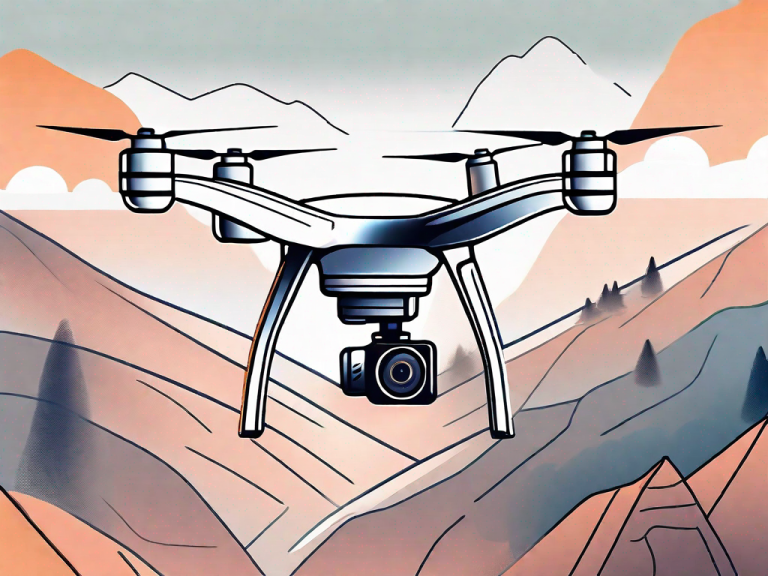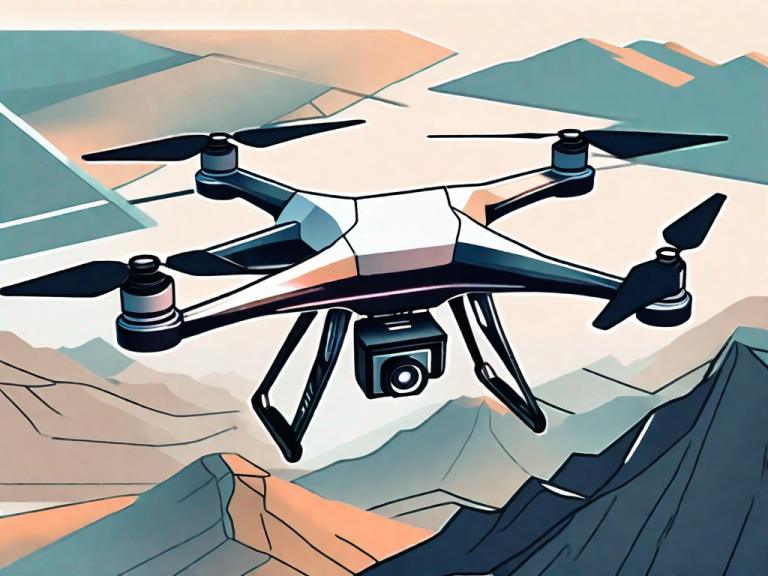If you’re a real estate photographer, you know how important it is to have the right equipment to capture stunning indoor shots. And one crucial piece of equipment that can make or break your photos is the lens you choose to use. In this article, we will delve deep into the world of indoor real estate photography lenses, discussing everything from the factors to consider when selecting a lens to exploring different types of lenses and their impact on your shots. Whether you’re a beginner looking for budget-friendly options or a seasoned professional seeking high-end lenses for superior results, we have got you covered.
Understanding the Importance of Choosing the Right Lens for Indoor Real Estate Photography
Indoor real estate photography presents unique challenges that require careful consideration when selecting a lens. The right lens can help you capture the true essence of a space, while the wrong one may result in distorted or uninspiring images. In indoor environments, lighting conditions can vary significantly, making it essential to choose a lens that performs well in low-light situations. Additionally, indoor spaces often have limited room to maneuver, so a lens with a suitable focal length and angle of view is crucial to capture the entire space in a single frame. By understanding these importance factors, you can make a more informed decision when it comes to selecting the best lens for your indoor real estate photography needs.
Another important factor to consider when choosing a lens for indoor real estate photography is the lens’s ability to minimize distortion. Wide-angle lenses are commonly used in real estate photography to capture a larger field of view, but they can also introduce distortion, especially when photographing rooms with straight lines and architectural details. To avoid this, it is recommended to opt for a lens with a low distortion level or use lens correction techniques in post-processing. By selecting a lens that minimizes distortion, you can ensure that your indoor real estate photographs accurately represent the space and its features.
Key Factors to Consider When Selecting a Lens for Indoor Real Estate Photography
When choosing a lens for indoor real estate photography, there are several key factors to consider. One of the most crucial considerations is the lens’s maximum aperture, as it determines the amount of light the lens can gather. A large aperture, such as f/2.8 or wider, is ideal for indoor photography as it allows for faster shutter speeds and better low-light performance. Another important factor is the lens’s focal length. Wide-angle lenses, typically ranging from 14mm to 35mm, are popular choices for indoor real estate photography as they allow you to capture more of the room in a single frame. It’s also essential to think about the lens’s compatibility with your camera system, ensuring it is the right mount and has all the necessary features to work seamlessly with your gear.
Exploring Different Lens Types and Their Impact on Indoor Real Estate Photography
There are various types of lenses available for indoor real estate photography, each with its own strengths and limitations. Prime lenses, also known as fixed focal length lenses, offer excellent image quality and are often preferred by professionals. Zoom lenses, on the other hand, provide versatility by allowing you to change the focal length without the need to switch lenses. Wide-angle lenses are perfect for capturing the overall space and creating a sense of depth in your shots, while macro lenses are ideal for capturing fine details and showcasing the craftsmanship of a property. Tilt-shift lenses can correct perspective distortion and ensure straight lines in architectural photography. By exploring the different lens types, you can determine which one best suits your specific indoor real estate photography needs.
Prime vs. Zoom Lenses: Which is the Best Choice for Indoor Real Estate Photography?
When deciding between prime and zoom lenses for indoor real estate photography, it ultimately boils down to personal preference and shooting style. Prime lenses are often favored for their superior image quality and wide apertures, allowing you to achieve stunning bokeh and better low-light performance. They are also generally lighter and more compact, making them easier to handle in tight indoor spaces. On the other hand, zoom lenses offer flexibility by allowing you to quickly adjust the focal length without changing lenses, making them convenient for capturing different perspectives without needing to move around. Consider your shooting preferences and priorities to determine which lens type will best suit your indoor real estate photography requirements.
Evaluating the Best Focal Lengths for Indoor Real Estate Photography
Choosing the right focal length for indoor real estate photography is critical to capturing the essence of a space effectively. As mentioned earlier, wide-angle lenses are commonly favored for their ability to capture more of the room in a single frame. This is especially useful when photographing small spaces or showcasing the overall layout of a property. Popular focal lengths for wide-angle lenses range from 14mm to 35mm, allowing you to achieve a wider perspective and create a sense of depth in your images. However, it’s also important to consider the potential distortion that can occur with extreme wide-angle lenses. A careful balance must be struck to avoid excessively distorted or unnatural-looking images.
Aperture: How it Affects Indoor Real Estate Photography and Lens Selection
The aperture of a lens plays a crucial role in indoor real estate photography. The lens’s aperture size determines how much light can enter the camera, impacting the overall exposure and the ability to shoot in low-light conditions. A larger aperture, represented by a lower f-number, allows more light to pass through the lens, resulting in brighter images. This is especially important when photographing dimly lit indoor spaces. Additionally, a wider aperture creates a shallower depth of field, allowing you to selectively focus on specific elements in the frame and create a pleasing blurred background. The choice of aperture will depend on the desired effect and the lighting conditions you encounter during your indoor real estate photography sessions.
The Role of Image Stabilization in Indoor Real Estate Photography Lenses
Image stabilization is a feature found in some lenses and camera bodies that helps reduce the effects of camera shake, resulting in sharper images. This feature can be particularly beneficial in indoor real estate photography, where lighting conditions may require slower shutter speeds. By compensating for small movements caused by handholding the camera, image stabilization allows you to shoot at slower shutter speeds without sacrificing image quality. This can be especially useful when shooting in low-light situations where a tripod may not be practical. If you frequently find yourself shooting handheld or in dimly lit spaces, considering a lens with image stabilization can significantly improve the sharpness and overall quality of your indoor real estate photographs.
Wide-Angle Lenses: Enhancing Space and Perspective in Indoor Real Estate Photography
As touched upon earlier, wide-angle lenses are highly advantageous for indoor real estate photography. Their ability to capture a wider perspective and showcase the entire space in a single frame allows viewers to get a sense of the room’s layout and size. Wide-angle lenses help create a feeling of openness and spaciousness, making rooms appear larger than they may be in reality. Consequently, they are the go-to choice for real estate photographers looking to highlight the best features of a property and create visually appealing images that entice potential buyers. When using wide-angle lenses, it’s essential to pay attention to potential distortion and ensure that lines and architectural details remain straight and natural-looking.
Macro Lenses: Capturing Fine Details in Indoor Real Estate Photography
While wide-angle lenses excel at capturing the overall space, macro lenses are designed to capture intricate details that may otherwise go unnoticed. In indoor real estate photography, macro lenses are particularly useful when photographing unique architectural elements, decorative features, or close-ups of visually captivating details. Macro lenses allow you to get up close and personal, revealing the intricate craftsmanship and quality materials used in a property. By incorporating macro shots into your indoor real estate photography, you can add another layer of dimension and highlight the finer aspects that make a property truly exceptional.
Tilt-Shift Lenses: Correcting Perspective Distortion in Indoor Real Estate Photography
One common issue faced in indoor real estate photography is perspective distortion, where vertical lines appear to converge or walls appear skewed. Tilt-shift lenses offer a solution to this problem by allowing you to control and correct perspective distortion during image capture. These lenses are popular among real estate photographers who aim to showcase properties accurately and aesthetically by maintaining straight lines and keeping vertical structures parallel. Tilt-shift lenses provide tremendous control over perspective, giving you the ability to adjust the lens movements to match the building’s architectural lines, creating visually pleasing and true-to-life indoor real estate photographs.
Lens Compatibility: Finding the Best Match for Your Camera System in Indoor Real Estate Photography
When selecting a lens for your indoor real estate photography, it’s crucial to ensure compatibility with your camera system. Different camera manufacturers utilize different lens mounts, so it’s essential to choose lenses that match your camera’s specific mount. Additionally, consider the overall system compatibility, including advanced lens features like autofocus and image stabilization. Some camera systems have proprietary features that work seamlessly with specific lenses, enhancing overall performance. Researching and investing in lenses that are compatible with your camera system will ensure optimal functionality and help you achieve the best possible results in your indoor real estate photography.
Budget-Friendly Options: Affordable Lenses for Indoor Real Estate Photography
Photography is an art that often demands a significant investment in equipment, but that doesn’t mean you have to break the bank to find a lens that meets your indoor real estate photography needs. There are several budget-friendly lens options available that offer excellent image quality and performance without costing a fortune. Research and comparison shopping can help you find lenses that provide great value for money. Consider looking into third-party lens manufacturers that often offer more affordable alternatives to the camera brand’s lenses, without compromising on quality. By exploring these budget-friendly options, you can still achieve outstanding results in your indoor real estate photography while staying within your financial means.
Professional-Grade Lenses: High-End Options for Superior Results in Indoor Real Estate Photography
If you’re a professional real estate photographer or aspire to achieve the highest level of image quality and performance, investing in professional-grade lenses may be the right choice for you. These lenses are typically crafted to the highest standards and utilize premium materials, resulting in exceptional image sharpness, superb color rendition, and low distortion. Professional-grade lenses often offer wider apertures, advanced autofocus systems, and superior build quality to withstand the demands of regular use. While they may come with a higher price tag, these lenses are designed to deliver outstanding results consistently and can significantly enhance your indoor real estate photography work.
Tips and Techniques for Maximizing Lens Performance in Indoor Real Estate Photography
Once you have selected the best lens for your indoor real estate photography needs, there are several tips and techniques you can employ to maximize its performance and achieve outstanding results. First and foremost, it’s essential to keep your lens clean and free from dust or smudges that can degrade image quality. Regularly inspect and clean your lens using appropriate cleaning tools and techniques recommended by the manufacturer. Additionally, consider using a lens hood to minimize flare and protect the front element of the lens. Experiment with different shooting angles and perspectives to find the most visually appealing compositions and highlight the unique features of each indoor space. Lastly, continue to practice and refine your skills to get the most out of your chosen lens and consistently improve your indoor real estate photography.
Lens Maintenance and Care: Ensuring Longevity and Optimal Performance in Indoor Real Estate Photography
To ensure your lens lasts for years and continues to perform optimally, proper maintenance and care are essential. Avoid exposing your lens to harsh conditions, extreme temperatures, or excessive humidity that can damage internal components. When not in use, store your lens in a dust-free and dry environment, preferably in a protective case or bag. Regularly inspect your lens for any signs of damage or wear and promptly address any issues by contacting a professional service center if needed. Keeping your lens clean, well-maintained, and protected will not only extend its lifespan but also preserve its performance, ensuring you consistently achieve exceptional results in your indoor real estate photography.
Comparing Top Brands and Models of Lenses for Indoor Real Estate Photography
Various brands offer lenses suitable for indoor real estate photography, each with its own strengths and unique characteristics. Some of the top brands known for their lenses’ quality and versatility include Canon, Nikon, Sony, and Sigma. These brands offer a wide range of lenses specifically designed for indoor photography, ensuring you can find the perfect match for your camera system and shooting requirements. It’s important to research and compare different models within each brand, considering factors such as focal length, maximum aperture, image stabilization, and compatibility with your camera system. By comparing top brands and models, you can make an informed decision and select the lens that best suits your indoor real estate photography needs.
Customer Reviews and Recommendations: Choosing a Lens Based on User Experiences in Indoor Real Estate Photography
While technical specifications and brand reputation play an important role in choosing a lens, it can also be beneficial to consider customer reviews and recommendations. Hearing from other photographers who have firsthand experience with a particular lens can provide valuable insights and help you understand its real-world performance. Online photography communities, forums, and review websites are excellent resources for gathering feedback and opinions from fellow photographers. Pay attention to user reviews that align with your specific indoor real estate photography needs, taking note of both positive and negative experiences to make a well-rounded assessment of a lens before making your decision.
Expert Insights: Advice from Professional Photographers on Selecting the Best Lens for Indoor Real Estate Photography
Professional photographers who specialize in indoor real estate photography can offer valuable insights and advice on selecting the best lens for the job. Their expertise and firsthand experience can provide practical tips, recommendations, and considerations specific to this genre of photography. Seek out articles, interviews, or online resources where these professionals share their expertise and discuss their preferred lenses or lens selection criteria. By learning from the experience of experts in the field, you can gain a deeper understanding of the lens requirements and improve your ability to select the best lens for your own indoor real estate photography needs.
Conclusion: Making an Informed Decision to Achieve Outstanding Results in Your Indoor Real Estate Photography
Choosing the best lens for your indoor real estate photography is a crucial decision that can greatly impact the quality of your images. By understanding the importance of lens selection, considering key factors such as focal length and maximum aperture, and exploring different lens types, you can make a well-informed decision. Whether you opt for a budget-friendly lens or invest in a professional-grade one, remember to take proper care of your lens and practice various techniques to maximize its performance. With the right lens and a keen eye for composition, you can capture stunning indoor real estate photographs that showcase properties in their best possible light and leave a lasting impression on viewers.









